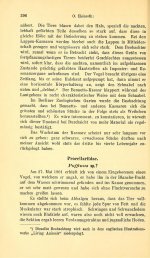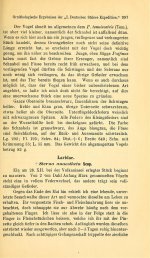Björn Bergenholtz
(former alias "Calalp")

I don´t think there are any doubt that Heinroth's Shearwater Puffinus (lherminieri) heinrothi REICHENOW 1919 commemorate the German biologist, ethnologist, ornithologist, traveler and collector Oskar August Heinroth (1871–1945).
This Shearwater was described (and was given its Scientific name) by Anton Reichenow in 1919, but Oskar Heinroth who discovered the first specimen, a single newly fledged juvenile bird, obtained by the "Blanche-Bucht" (today's Blanche Bay), New Britain, on the 27 of May 1901, had written about it himself.
Even if he, Heinroth, didn´t dare to claim it was a new species, not from just one specimen, and a juvenile one … he just listed it as "Puffinus sp.?" … but I think he suspected it!
Heinroth's own text about this first juvenile bird was published in: Heinroth, O. 1902. Ornithologische Ergebnisse der „I. Deutschen Südsee Expedition von Br. Mencke.“/Zusammenstellung der vom 6. Dezember bis 6. Juni 1901 im Bismarckarchipel untersuchten und gesammelten Vögel. Journal für Ornithologie 50: 390-457. … on pp. 396-397 (attached).
I don´t understand much German … but isn´t that was this quote, by Heinroth himself, indicates?
Is there anyone of you guys out there, with better knowledge of German feel like translating it?
If so, please as accurate as possible, as I would like to quote it myself in Swedish. And don´t hesitate to remark on any errors that I might have done transcribing it.
Does the rest of those two pages tell us anything of how he got hold of the bird? Was it shot, caught alive … or? And was it really just one, a single bird?
This Shearwater was described (and was given its Scientific name) by Anton Reichenow in 1919, but Oskar Heinroth who discovered the first specimen, a single newly fledged juvenile bird, obtained by the "Blanche-Bucht" (today's Blanche Bay), New Britain, on the 27 of May 1901, had written about it himself.
Even if he, Heinroth, didn´t dare to claim it was a new species, not from just one specimen, and a juvenile one … he just listed it as "Puffinus sp.?" … but I think he suspected it!
Heinroth's own text about this first juvenile bird was published in: Heinroth, O. 1902. Ornithologische Ergebnisse der „I. Deutschen Südsee Expedition von Br. Mencke.“/Zusammenstellung der vom 6. Dezember bis 6. Juni 1901 im Bismarckarchipel untersuchten und gesammelten Vögel. Journal für Ornithologie 50: 390-457. … on pp. 396-397 (attached).
I don´t understand much German … but isn´t that was this quote, by Heinroth himself, indicates?
"Wenn es auch durchaus möglich ist, dass der Vogel einer bisher unbeschriebenen Art angehört, so halte ich mich doch nicht für berechtigt, auf dies eine unerwachsene Stück eine neue Spezies zu gründen."
Is there anyone of you guys out there, with better knowledge of German feel like translating it?
If so, please as accurate as possible, as I would like to quote it myself in Swedish. And don´t hesitate to remark on any errors that I might have done transcribing it.
Does the rest of those two pages tell us anything of how he got hold of the bird? Was it shot, caught alive … or? And was it really just one, a single bird?
Attachments
Last edited:






